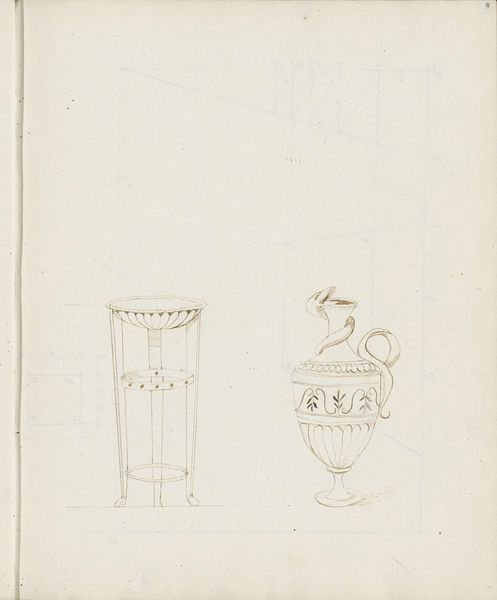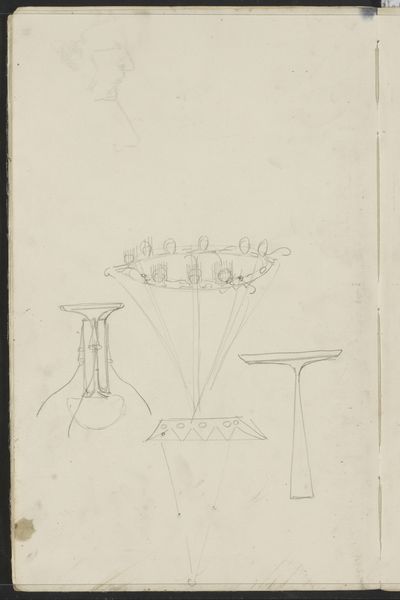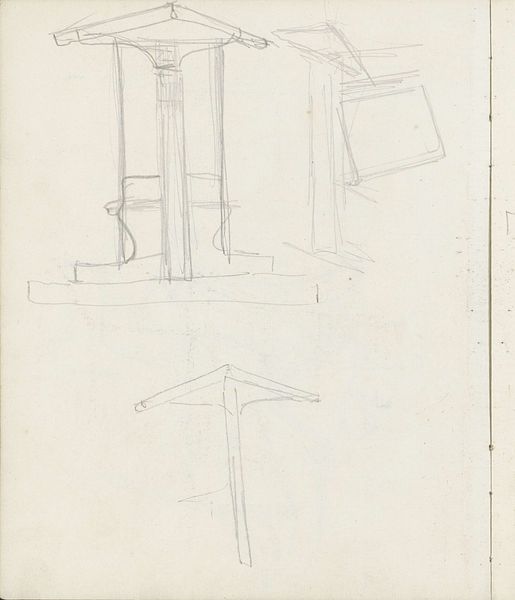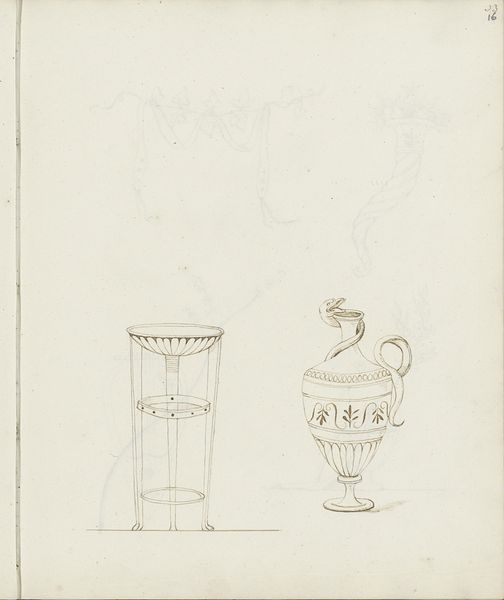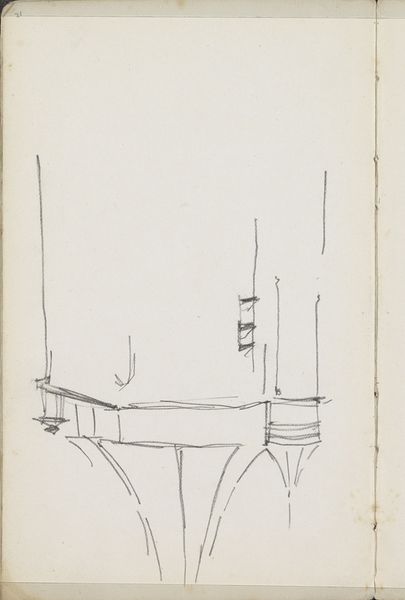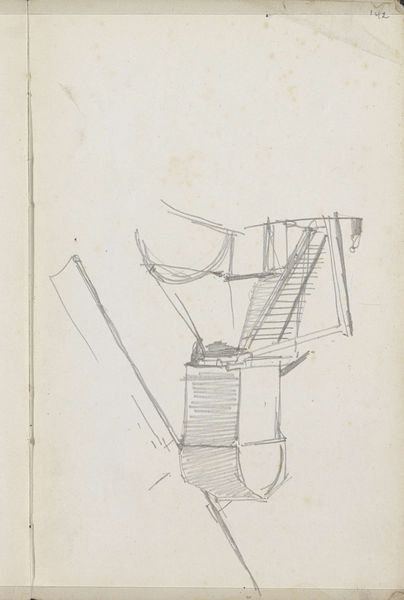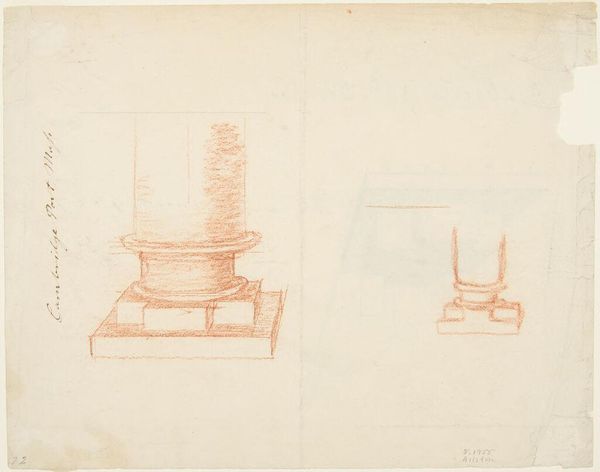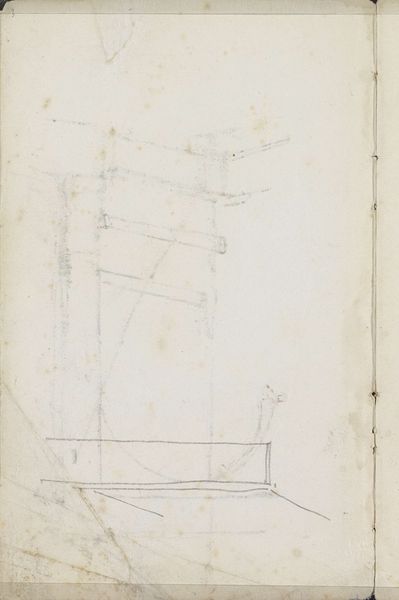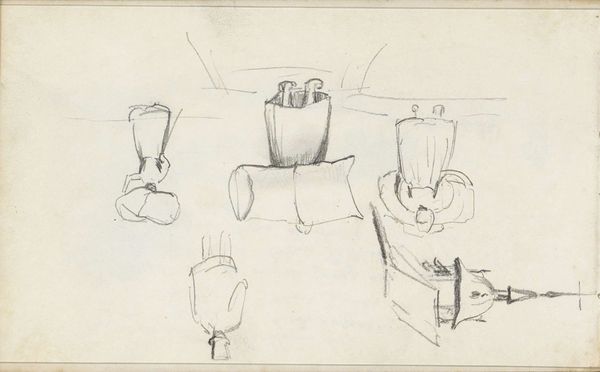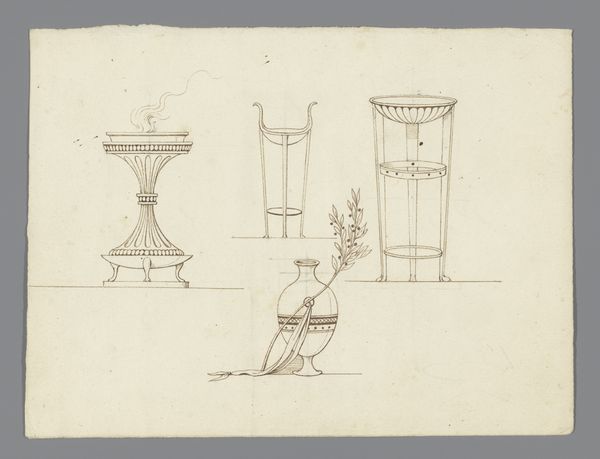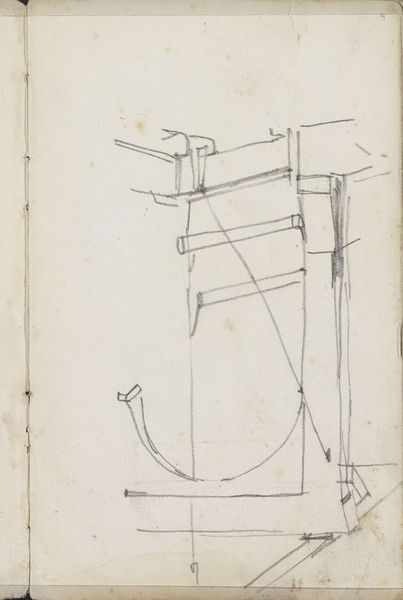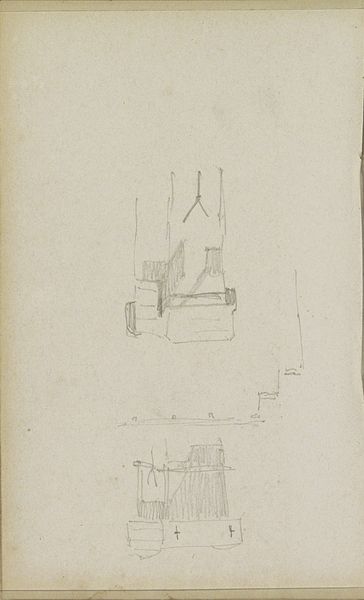
drawing, paper, ink
#
drawing
#
neoclacissism
#
paper
#
ink
#
geometric
#
line
Copyright: Rijks Museum: Open Domain
Editor: This is “Altaren,” a drawing made with ink on paper sometime between 1816 and 1852. It appears to depict some Neoclassical architectural elements, like a brazier with a diamond design and an interesting chair or stand. The lines are so delicate. What do you notice about its composition and the elements depicted? Curator: Indeed, the linearity is striking. We observe a restrained application of ink, delineating forms with an almost mathematical precision. Note the geometric purity—the diamond, the implied circles. The drawing privileges line over mass. How does this emphasis on form inform your understanding of its purpose? Editor: It feels very intentional, like a carefully considered design rather than a spontaneous sketch. Do you mean the bareness makes me focus on the objects as forms, divorced from their context? Curator: Precisely. Consider the negative space. The stark background amplifies the structural integrity of each object. The meticulous rendering of each line encourages us to view it as a study in pure form, echoing Neoclassical ideals. Is it possible to discern the intent of the artist through these compositional choices? Editor: Maybe it’s about capturing an ideal of order and clarity? So, the restraint in the medium reinforces that clarity. It almost feels…clinical? Curator: "Clinical" is a fascinating descriptor. The artist avoids emotive flourishes, preferring a dispassionate portrayal. We must consider how such stylistic decisions situate the work within its art historical moment and intellectual discourse. Editor: This makes me appreciate the power of lines, forms, and even emptiness in conveying meaning. Curator: Yes, the piece reveals its essence through form, and from such observation can spring a new appreciation for Neoclassical design.
Comments
No comments
Be the first to comment and join the conversation on the ultimate creative platform.
